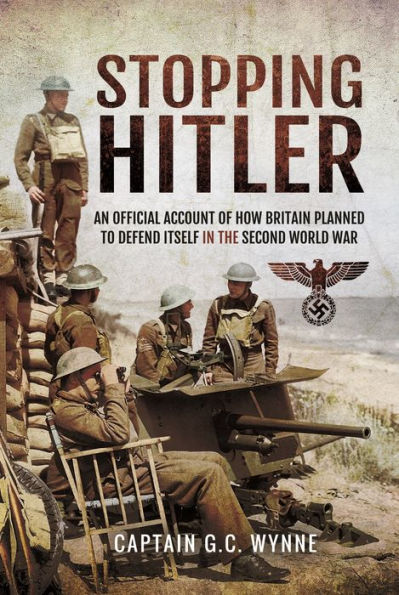Stopping Hitler: An Official Account of How Britain Planned to Defend Itself in the Second World War
After the unprecedented death and devastation of the First World War, few people imagined that such a conflict could ever happen again. Though the belief that it had been the ‘war to end war’ was to be shattered within a generation, in the immediate aftermath of the First World War it was expected that international disputes could be settled by arbitration through the creation of League of Nations. Consequently, the British Government concluded that there would not be another war in the foreseeable future and therefore the country’s armed forces could be correspondingly scaled back.The rise of Nazism in Germany in the 1930s, however, prompted politicians and military leaders to contemplate the frightening prospect of another global conflict. The Chiefs of Staff of the three Services were instructed to bring Britain’s armed forces up to a standard where they could resist a revitalized and powerful aggressor, and to put in place plans for the defense of the country.When that war became a reality, the Chiefs of Staff then had to devise schemes to prevent a German invasion and, as the war progressed, to counter the bombers of the Luftwaffe and the flying bombs and rockets that followed.Reproduced here in its entirety is an official account drawn up by Captain G.C. Wynne of the Historical Section, Cabinet Office in 1948. Arranged in four parts, corresponding to the four different threats which developed with the changing situations of the war, it details the various plans made for Home Defence between 1939 and 1945.
"1124484777"
Stopping Hitler: An Official Account of How Britain Planned to Defend Itself in the Second World War
After the unprecedented death and devastation of the First World War, few people imagined that such a conflict could ever happen again. Though the belief that it had been the ‘war to end war’ was to be shattered within a generation, in the immediate aftermath of the First World War it was expected that international disputes could be settled by arbitration through the creation of League of Nations. Consequently, the British Government concluded that there would not be another war in the foreseeable future and therefore the country’s armed forces could be correspondingly scaled back.The rise of Nazism in Germany in the 1930s, however, prompted politicians and military leaders to contemplate the frightening prospect of another global conflict. The Chiefs of Staff of the three Services were instructed to bring Britain’s armed forces up to a standard where they could resist a revitalized and powerful aggressor, and to put in place plans for the defense of the country.When that war became a reality, the Chiefs of Staff then had to devise schemes to prevent a German invasion and, as the war progressed, to counter the bombers of the Luftwaffe and the flying bombs and rockets that followed.Reproduced here in its entirety is an official account drawn up by Captain G.C. Wynne of the Historical Section, Cabinet Office in 1948. Arranged in four parts, corresponding to the four different threats which developed with the changing situations of the war, it details the various plans made for Home Defence between 1939 and 1945.
38.95
In Stock
5
1

Stopping Hitler: An Official Account of How Britain Planned to Defend Itself in the Second World War
400
Stopping Hitler: An Official Account of How Britain Planned to Defend Itself in the Second World War
400
38.95
In Stock

Product Details
| ISBN-13: | 9781399020817 |
|---|---|
| Publisher: | Pen and Sword |
| Publication date: | 10/05/2022 |
| Pages: | 400 |
| Product dimensions: | 6.10(w) x 9.10(h) x (d) |
About the Author
From the B&N Reads Blog
